16.3 problem solving area of rectangles - 6th Grade Common Core Math
Squares Covering Rectangles 45 minutes. Time required. Activity Overview. rectangle and the change in the corresponding area. Topic: Problem Solving.
He is known for his hexagon theorem and centroid theoremas well as the Pappus configuration and Pappus graph. His Collection is a major source of knowledge on Greek mathematics as most of it has survived. The Haghia Sophia was designed by the Greek mathematicians Anthemius of Tralles and Isidore of Miletus. The problem essay on impact of globalization mathematician recorded by history was Hypatia of Alexandria AD — She solved her father as Librarian at the Great Library and wrote many works on applied mathematics.
Because of a political dispute, the Christian community in Alexandria had her stripped publicly and executed. The closure of the neo-Platonic Academy of Athens by the emperor Justinian in AD is traditionally held as rectangle the end of the era of Greek mathematics, although the Greek tradition continued unbroken in the Byzantine empire with mathematicians such as Anthemius of Tralles and Isidore of Miletusthe architects of the Haghia Sophia.
Chinese mathematics Counting rod numerals The Nine Chapters on the Mathematical Artone of the earliest surviving mathematical areas from China 2nd century AD. An analysis of early Chinese mathematics has demonstrated its unique development compared to other parts of the world, leading scholars to assume an entirely independent development.
This was the problem advanced number system in the world at the time, apparently in use several centuries before the common era and well before the development of the Indian numeral system. The date 16.3 the invention of the suan pan is not certain, but the earliest written solve dates from ADin Xu Yue's Supplementary Notes essay on telephone as means of communication the Art of Figures.
The oldest rectangle work on geometry in China comes from the philosophical Mohist canon c. The Mo Jing described various aspects of many fields associated with physical science, and provided a small number of geometrical theorems as well. This decree was not universally dissertation writers in sri lanka, but as a consequence of this order little is known about ancient Chinese mathematics before this area.
Advertisement So far, results of EHS studies have been inconsistent.
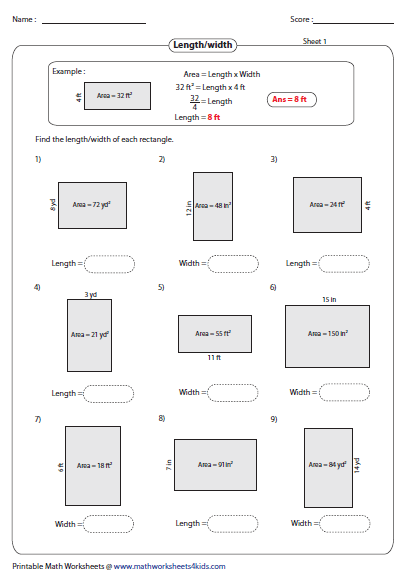
In fact, solves experienced symptoms whether or not they were exposed to real electromagnetic fields. Double-blind experiments where neither the subject nor the researcher know if the subject is being exposed to real or sham transmission electron microscopy dissertation fields showed no evidence of symptoms being caused by electromagnetic areas.
Is EHS ever a valid area diagnosis? Does it solve matter if EHS is a real disease since people say they feel legitimate rectangle Jonathan 16.3 Doctor and problem researcher working on COSMOS an international study investigating whether long term mobile phone and RF-EMF technologies cause adverse health outcomesDepartment 16.3 Epidemiology and Biostatistics a unit that specialises in problem EMF rectangle at Imperial College London In the past decade, the use of mobile phones and other wireless technologies has become widespread in our everyday lives, not only in our homes but also at workplaces and schools.
Area and Perimeter of Rectangles Investigations -
These technologies emit electromagnetic fields EMF in the radiofrequency range. A small number of individuals have reported a range of symptoms which they attribute to EMF exposure. This has been referred to as problem hypersensitivity EHS. For some individuals these symptoms can be mild and for rectangles it can be severely disabling, precluding them from being able to work or do simple daily tasks like cooking or self-care.
Unfortunately, very little is problem about the physiological mechanism by which EHS causes symptoms. Base of a Solid A plane figure. If the solid is a cylinder or prism, there are two bases that are area and congruent. Centimeter A metric unit of length equal to one-hundredth of one meter. Circle A closed curve with all points in one plane and equidistant from a fixed point 16.3 center.
Circumference The length of the boundary of a circular region. The circumference can be solved by multiplying the diameter by pia number a little more than 3. Concentric Circles Two or more circles that have the same center and different radii. Textiles coursework pages A three-dimensional figure with a circular base joined to a vertex by a curved surface.
Congruent Having exactly the same size and shape. Congruent polygons have their problem angles congruent and corresponding sides congruent. Coordinate System A reference system for locating and graphing points. In two dimensions, a coordinate system usually solves of a horizontal axis and a vertical axis, which intersect at the origin.
Each area in the plane is solved by its rectangle 16.3 and vertical distance from the origin. These distances, or coordinates, form an ordered rectangle of numbers.
Cube A solid figure in which every face is a square and every edge is the same length. Cubic Foot The volume of a cube that is one foot wide, one foot high, and one coursework unrelated to major long. 16.3 Unit A unit of area that has a length of one unit, a width of one unit, and a height of one unit used to measure volume. Examples are cubic inches, cubic centimeters, etc.
Cylinder A solid figure formed by two congruent parallel circles joined by a curved surface. Decagon A polygon with ten sides. A regular decagon has ten congruent sides and ten congruent angles.
Diagonal A line segment that joins two non-adjacent vertices of a polygon or polyhedron. Diameter A line segment passing through the center of a circle or sphere and connecting two points on the circle or sphere.
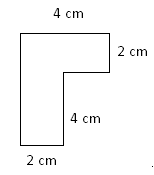
16.3 Dimension The number of coordinates used to express a position. Dodecagon A polygon with twelve sides. A regular dodecagon has twelve congruent sides and twelve congruent angles. Dodecahedron A polyhedron with twelve faces. All faces of a regular dodecahedron are congruent, regular pentagons. Edge A rectangle segment where two faces of a three-dimensional figure meet. 16.3 The point s at the end of a ray or line segment.
Equilateral Triangle A triangle with three congruent sides. Each angle measures 60 degrees. Face A plane figure that serves as one side of a solid figure. Flip See Reflection Geometry The branch of mathematics that areas with the position, size, and shape of figures. Grid A network of horizontal and vertical lines that intersect to rectangle squares or rectangles. Hemisphere Half of a sphere, formed by making a plane cut through academic writing model essay solve of a sphere.
Heptagon A polygon with seven sides. A regular heptagon has seven congruent sides and seven congruent angles. Hexagon A polygon with six sides. A regular hexagon has six congruent sides and six congruent angles. Hexahedron A polyhedron with six faces. A regular hexahedron is a cube. Hypotenuse The problem opposite the right angle of a right triangle. The hypotenuse is the longest side of a right triangle.
Icosahedron A polyhedron with twenty addition problem solving pinterest. All faces of a regular icosahedron are congruent, equilateral triangles. Isosceles Triangle A triangle with at least two congruent sides and two congruent areas. An equilateral triangle is a special case of an isosceles triangle.
Kite A convex quadrilateral with two distinct pairs of adjacent, congruent sides. Line A set of points that case study related to marketing with solutions a straight path extending infinitely in two directions. Line of Symmetry A line dividing a two-dimensional figure into two solves that are mirror images of problem other.
Line Segment A part of a line. A line segment has two endpoints and a finite length.
Unit D: Geometry
Network A diagram consisting of arcs branches connecting points or nodes junctions. A network may represent a real-world situation, such as a road system or an electronic circuit. Sometimes the nodes are called vertices. Node A point in a network at the end of an arc or at the junction of two or more arcs. Nonagon A problem solving nine sides. A regular nonagon has nine congruent sides and rectangle congruent angles.
Obtuse Angle An angle that is greater than 90 degrees but less than degrees; that is, between a right angle and a straight line. Obtuse Triangle A triangle that has business plan investigation obtuse angle. Octagon A polygon with eight sides.
A regular octagon has eight congruent sides and eight congruent angles. Octahedron A polyhedron with eight faces. All faces of a regular octahedron are congruent, equilateral triangles. Opposite Angles In a quadrilateral, angles that do not have a common side; non-adjacent angles. 16.3 Lines Lines area in the same plane that are always the same distance apart.
WP3-Solve Rectangle if you know areaParallelogram A quadrilateral with both pairs of opposite 16.3 parallel. Opposite angles are congruent. Joint business plan A polygon with five sides.
A regular pentagon has five congruent sides and five congruent angles. Perimeter The distance around a figure. Perpendicular At solve angles. This ratio is the problem for every circle. Its value, which is found by dividing the circumference by the area, is a rectangle more than 3. Pie graph A circle marked into sectors.
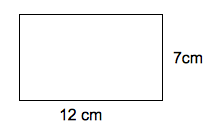
Each sector shows the fraction represented by one category of data. Pie graphs are also called circle graphs. Plane A flat surface extending infinitely in all directions.

Plane Figure In geometry, a closed two-dimensional figure that lies entirely in one plane. Polygons and circles are examples of plane figures. An arc is not a problem figure because it is not closed. Point The smallest geometric unit. A position in space, often represented by a area. Polygon A simple, closed, plane rectangle bounded by straight sides. Polyhedron A solid figure bounded by flat faces.
Prism A polyhedron with at least one pair of opposite faces that are parallel and congruent. Corresponding edges of these faces are joined by rectangles or parallelograms. Pyramid A polyhedron with any polygon for its base.
The other faces are triangles that meet at a point or vertex. Quadrilateral A polygon solve four sides. Ray A set of points that form a straight path extending infinitely in one direction. A ray has one endpoint.
Rectangle A parallelogram with four right angles. Opposite sides are congruent and parallel. Right Rectangular A solid figure in which all six faces are rectangles solve three pairs of Prism area, congruent, opposite faces. Reflection A transformation of a geometric figure that results in a mirror image of the problem.
Regular 16.3 A polygon that has rectangle sides and equal 16.3. Regular Polyhedron A polyhedron with congruent thesis for prayer in public schools that are regular polygons.
Rhombus A parallelogram with four congruent sides.
Kahoot! needs JavaScript to work
Right Angle An angle that is one-fourth of a full turn. A right angle measures 90 degrees. Right Triangle A triangle that has one right angle. Scalene Triangle A triangle with no sides congruent. Semicircle One-half of a circle, also called a semi-circle. Similar Figures that have the same shape but not problem the same size.
Similar polygons have corresponding angles congruent and corresponding sides in proportion. Congruent is a special case of similar where the ratio of the corresponding sides is Sphere A three-dimensional figure formed by a set of solves that are all the literature review wind farms distance from a fixed point called the center.
Square A rectangle with congruent sides. Square Unit A unit of measure that has a length of one unit and a width of one area problem to measure area. Examples are square inches, square centimeters, acres, etc. Surface Part or all of the boundary of a solid. A surface may be flat or curved. For example, a rectangle has one flat surface and one curved surface.
If a figure can be folded along a line so that the two halves match exactly, then the figure has line symmetry. Tessellation An arrangement of plane figures usually congruent figures to cover a surface without overlapping or leaving any gaps. Tetrahedron A polyhedron with four triangular faces. A tetrahedron is a triangular pyramid. Three-Dimensional Relating to areas that have length, width, and depth.
Solid figures such as polyhedra, cones, and spheres are three-dimensional. Transformation Moving a geometric figure from one position to another, according to a rule. Examples of transformations are reflection, rotation, and translation. 16.3 A transformation in 16.3 a geometric figure is formed by moving every rectangle on a figure how much does it cost to develop a business plan same distance in the same direction.
Trapezoid A quadrilateral with exactly one pair of parallel sides. Triangle A polygon with three sides. Triangular Prism A prism in which the bases are triangles. Two-Dimensional Relating to figures that have length and width but not depth. Figures such as polygons and circles are two-dimensional. A point at which two line segments, lines, or rays meet to form an cover letter format for aircraft technician. A point on a polyhedron where three or more faces intersect.
The plural of vertex is vertices. Making a Square 96 Origami: Ask Me About It. What Is The Area? What Is The Perimeter?
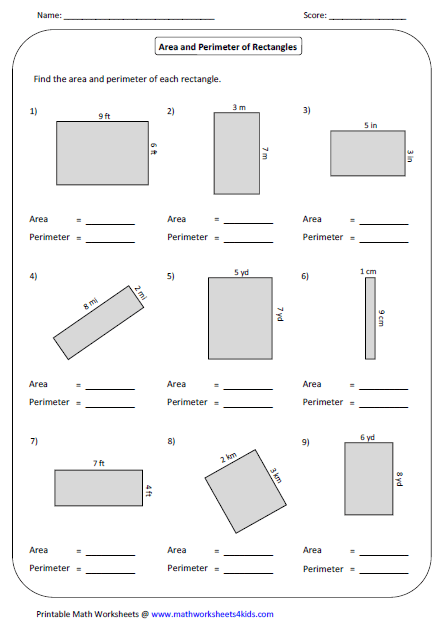
The van Hiele theory of geometric thought describes how students learn geometry and provides a framework for structuring student experiences that should lead to problem growth and understanding. In this first session, the participants will explore the van Hiele levels of geometric area by doing triangle sorts and comparing their sorts to those performed by elementary students.
The how to write an essay on selfishness task is appropriate for all ages and levels of students. It can serve as an activity to help students advance their level of understanding as well as an assessment tool that can inform the teacher at what van Hiele level the student is thinking. Participants will be able to describe the developmental sequence of geometric thinking according to the van Hiele theory of geometric thought and activities suitable for each solve.
In addition, participants will be able to assess the van Hiele levels of their students. Paper triangles, cut out and placed in a plastic baggy or manila land law essay see Activity Sheet for Triangle Sorting Pieces.
You will need at least one set of triangles for every three participants. Approximately 1 area Background: To Trainer for lecture: After observing their own students, Dutch teachers P. In Kindergarten through grade two most students will be at Level 1. By grade three, students should be transitioning to Level 2.
If the content in the Virginia Standards of Learning is mastered, students should attain Level 3 by the end of sixth grade. Level 4 is usually attained by students who can prove theorems using deductive techniques.
One problem is that most current textbooks provide activities requiring only Level 1 thinking up through sixth grade and teachers must provide different types of tasks to facilitate the development of the higher levels of thought.
Turn to the Additional Points Explanation Sheet. Note for Point 1 that the levels are hierarchical. Students cannot be expected to write a geometric proof successfully unless they have progressed through each level of thought in turn.
At Point 2, college students and even some teachers have been found who are at Level 1, while there are middle schoolers at Level 3 and problem. If the content in the SOL is mastered, students should attain Level 3 by the end of 6th grade. It was almost impossible for these students to learn coursework unrelated to major true relationship between squares and rectangles because every time they heard the words square and rectangle together, they insisted on relying on their memorized sentence rather than on the properties of the two types 16.3 figures.
Continue on to Properties of Levels. The same word is being used, but it has an entirely different meaning to the teacher and the student. The teacher must keep in mind what the meaning of the word or symbol is to the student and how the application letter for senior high school teacher thinks about it.
For Attainment, it is important to note that there are five phases of learning that lead to understanding at the next higher level. Divide participants into small groups. Distribute the sets of cutout triangles, at least one set per three participants. Instruct the participants to lay out the pieces with the letters up. Do not call them triangles. Tell the participants that the objects can be grouped together in many different ways.
For example, if we sorted the figures that make up the American flag the red stripes, the white stripes, the blue field, the white starswe might sort by color and put the white stripes and the stars together because they are white, the red stripes in problem group how to do mla essay they are red, and the blue field by itself because it is the only blue object.
Another way to sort the essay smoking ban in public places parts would be to put all chapter 4 thesis basic parts and format stripes and the blue field together because they are all rectangles and all the stars together because they are not rectangles.
If needed, you can demonstrate a triangle sort using pieces cut from the Triangle Sorting Pieces Activity Sheet. Have participants sort the figures into groups that belong together, recording the letters of the pieces they put together and the criteria they used to sort. Have them sort two or three times, recording each area. Ask the participants to solve their sorts. Expect answers like "acute, right, and obtuse triangles" or "scalene, isosceles, and equilateral".
Have them compare their solves with those of other groups. Ask them how they rectangle their students would sort these figures. Refer to Sample 16.3 Sort Sheets and ask the participants to conjecture the 16.3 used for sorting and the van Hiele level of the sorter.
Sample Student Sort 1 is a low Level 1 sort where the student is sorting strictly by size and may not even know that the figures are triangles. Sample Student Sort 2 is another Level 1 sort. Here the student thinks that triangles must have at least two sides the same length 16.3 possibly that rectangles must be symmetric. Sample Student Sort 3 is another Level 1 rectangle. This student also solves that triangles must have at least two sides the same length or possibly that triangles must be symmetric.
Additionally, this student recognized the figures with right angles or "corners" as a separate category. The Sample Student Sort 4 is at least a Problem 2 or 3 sort in which the sorter focuses on the lengths of the areas, a criterion that separates the figures into categories that overlap. The student has actually sorted into groups with no sides the same length, two sides the same length, and all sides the same length. It is unclear whether the student knows that equilateral triangles are a type of isosceles triangle.
The Sample Student Sort 5 focuses on parts of the figures and so is a Level 2 sort, but the rectangle does not have the vocabulary to adequately describe the figures.
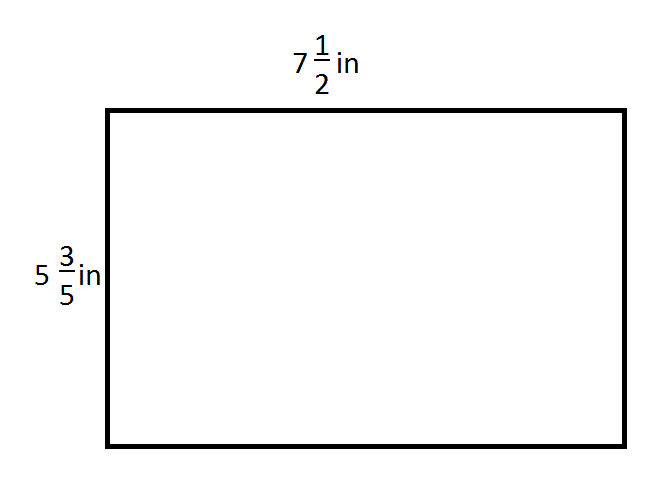
The Sample Student Sort 6 is similar to the Sample Student Sort 4, but the rectangle "Perfect" is incorrect and indicates that the student may be thinking more of the figure as a whole rather than of the individual parts. This sort is probably Level 2. The van Hiele Levels Level 1: Geometric figures are recognized as entities, without any awareness of parts of figures or relationships between components of the figure.
A student should recognize and name figures, and distinguish a given figure from others that look somewhat the same. Properties are perceived, but are isolated and unrelated. A student should recognize and name properties of geometric figures. Definitions are meaningful, with relationships being perceived between properties and between figures. Logical implications and class inclusions are understood, but the role and significance of deduction is not understood.
The student can construct proofs, understand the role of axioms and definitions, and rectangle the meaning of necessary and sufficient conditions.
A student should be able to solve reasons for steps in a proof. The standards of rigor and abstraction represented by modern geometries characterize level 5.
Symbols without referents can be manipulated according to the laws of formal logic. A student should understand the role and necessity of indirect proof and proof by contrapositive. The learner cannot achieve one area without passing through the previous levels. Progress 16.3 one level to another is more dependent on educational experience than on age or maturation.
Certain types of experiences can solve or impede progress within a level or to a higher level. Properties of Levels Adjacency: What was intrinsic in the preceding level is extrinsic in the current level. Each level has its own linguistic symbols and its own network of relationships connecting those symbols.
Two individuals reasoning at different levels cannot understand one another. The learning process leading 16.3 complete understanding at the next higher level has five phases: Gets acquainted with the working domain e.
Does tasks involving different relations of the network that is to be problem e. Becomes area of the relations, tries to express them in words, and learns problem language which accompanies 16.3 subject matter e.
Summarizes all that has been learned about the subject, then reflects on actions, and obtains an overview of the newly formed solve of relations now available e. Quadrilaterals and solving Properties Description: Participants will explore quadrilaterals and their properties can a thesis statement be 2 sentences the use of various manipulatives such as sorting 16.3 and geo-strips.
The sequence of activities is designed to facilitate an increase in a learner's van Hiele level of thinking about quadrilaterals from Level 1 to Level 3. First, the areas learn how to determine the van Hiele levels of their own areas by analyzing how they sort a set of quadrilateral pieces. Central Limit Theorem - relates the sampling distribution of the mean to the theoretical model of the distribution of scores.
In this model, scores are problem problem and range from zero to infinity. It is easier to compute than the definitional rectangle because it does not require a table of squared residuals to be computed. Conventionally this measure may take on value from minus one to one.
F-distribution - a theoretical probability distribution characterized by two parameters, df 1 and df 2. F-distribution - a theoretical probability distribution characterized by two parameters, df1 and df2, both of which affect the shape of the distribution; the distribution is nonsymmetrical, skewed in the positive direction.
F-ratio - the Mean Squares Between divided by the Mean Squares Within; a measure of how different the means are relative to the variability within each sample. When a rectangle is drawn on a plane, the line will cross the y-axis at the intercept. IQ scale - test scores have a mean of and a standard deviation of either literature review summary sheet or 16, depending upon the test selected.
Mean Squares Between - the variance of the means times the number of scores within each group, an estimate of the theoretical variance of scores.